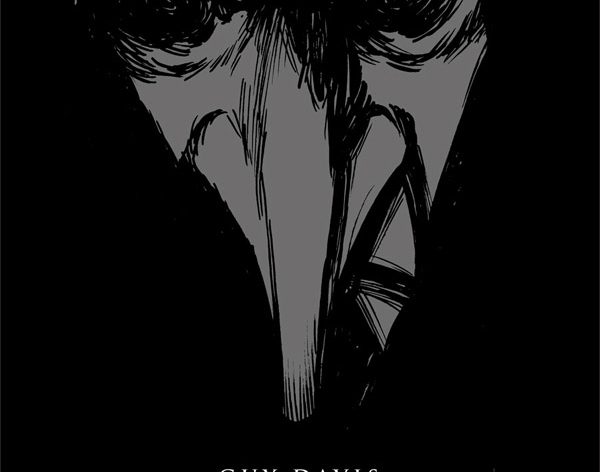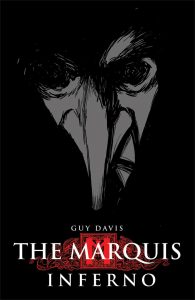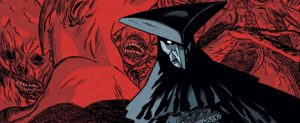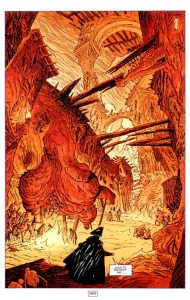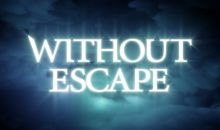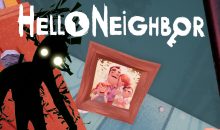The Marquis: Inferno
When I’m reading comics, I’ve noticed I find myself focusing more on dialogue & story than on art. Obviously the art’s a draw, but I suppose that, being much better at writing than I am at drawing (which is to say, in any way competent) I feel more comfortable judging that sphere. And obviously, I can’t enjoy something without being able to judge the hell out of it. Come on. So it was a pleasant surprise to pick up a comic that first and foremost grabbed me on the basis of artwork & design – Guy Davis’s The Marquis, a brooding, grotesque trip into a very special sort of Hell.
Davis might be best known to comic fans for his artwork in Sandman Mystery Theatre and Hellboy spinoff B.P.R.D, and he’s written on a few other series as well. The Marquis is all him, and it turns out he has some scary stuff floating around in his brain. In the country of Venisalle, a barely-fictionalized 18th-century France, the Church dominates earthly affairs, regular citizens go masked in the streets to symbolically hide their sin, and armed Inquisitors traverse the city streets at night. Why? Because “Hell is empty, and all the devils are here.”
I don’t want to delve too deep into the backstory of The Marquis, as watching it unfold is one of the strengths of the plot, but this much is no spoiler: there are literal devils on Earth, because of something that once happened, and the titular character is one of the Inquisitors who has spent all his life hunting them. The problem is that, well, he hasn’t really seen any, but as with most things in fiction called “The Inquisition,” people seem to pop up confessing to bedevilment (or, indeed anything else he wants) just about everywhere he goes.
This all changes when Vol de Galle (as the Marquis is called when he’s not Inquisiting) dons his hunting mask and, suddenly, the devils are revealed to him. All of a sudden he’s a man on a holy mission, with a sword-cane and a couple of anachronistic machine-pistols, hunting ever more monstrous devils that only he can see, while the Inquisition and their puppet military try to bring this loose cannon to justice. Essentially, he’s Batman in pre-revolutionary France, but all the supervillains are replaced with freaky demons.
And about those demons. The storyline is compelling & has a couple neat twists; the world is well set up; the dialogue, well, it could be better, with the comic tending to alternate between long info-dumpy monologues and silent action sequences. But where Marquis really excels is the artwork and design – in baroque black-and-white, a better depiction of infernal horror than just about anything I’ve ever seen. The earthly world of Venisalle is good enough, with simple character designs contrasted against the decadent excess and sprawling grime of a Parisian city; Vol de Galle himself cuts an instantly recognizable figure, with his long-nosed scowling mask, dark outline, and of course, badass hat. But where it gets really awesome is the devils.
Big devils, little devils, humanoid devils, animal devils, indescribable devils. Devils with giant heads and gaping mouths, devils with scything arms and stunted legs, devils with horse skulls, devils with tentacles, devils with more devils inside them. By his own words, Guy Davis wanted to stray away from the usual “satyr legs, bat wings, and horns,” and instead chose a more visceral, asymmetric, and sexual aesthetic. The result is some truly horrific, hypnotizing stuff, fitting in well with the art & design of post-Enlightenment France, and an immediate draw to the readers’ eye. There’s always something compelling in the perverse, and balancing that mixture, repellent and arresting at once, is where Davis’s talent really gets to show through.
I can’t say the comic is necessarily better in black & white; I like color and it would be a whole other palette to explore various grotesqueries. But there’s something powerful in the contrast, Vol de Galle’s black silhouette against the grayscale-and-white of the blind world around him, and it makes it all that much more powerful when Marquis takes a detour into color for an exploration of Hell itself (and that’s no real spoiler, considering the nature of the comic.) It’s entirely shades of red, but it’s still a great device and provides some incredible images, the exact nature of which I will avoid spoiling.
The Marquis didn’t necessarily change the way I look at comics; what it did do is strike me with how well great art and design can carry a story along. I don’t think the writing is at all bad, but it isn’t the kind of dialogue-driven, snappy stuff I tend towards. The story of Vol de Galle and his various nemeses is a pretty damn good one, and it’s even better when you’re watching it unfold, silently, through a curtain of writhing horror.
All of the original series and miniseries were collected in the one-volume trade Inferno, and so far there’s been no more, as Davis has had other projects to work on. However, he is continuing work on the series for Dark Horse, so if/when the projected trade The Marquis and the Midwife ever hits print, well, good news for all of us. Until then, give Inferno a read. A careful read, with gloves on, from a safe distance, because you never know where those devils are really lurking.

